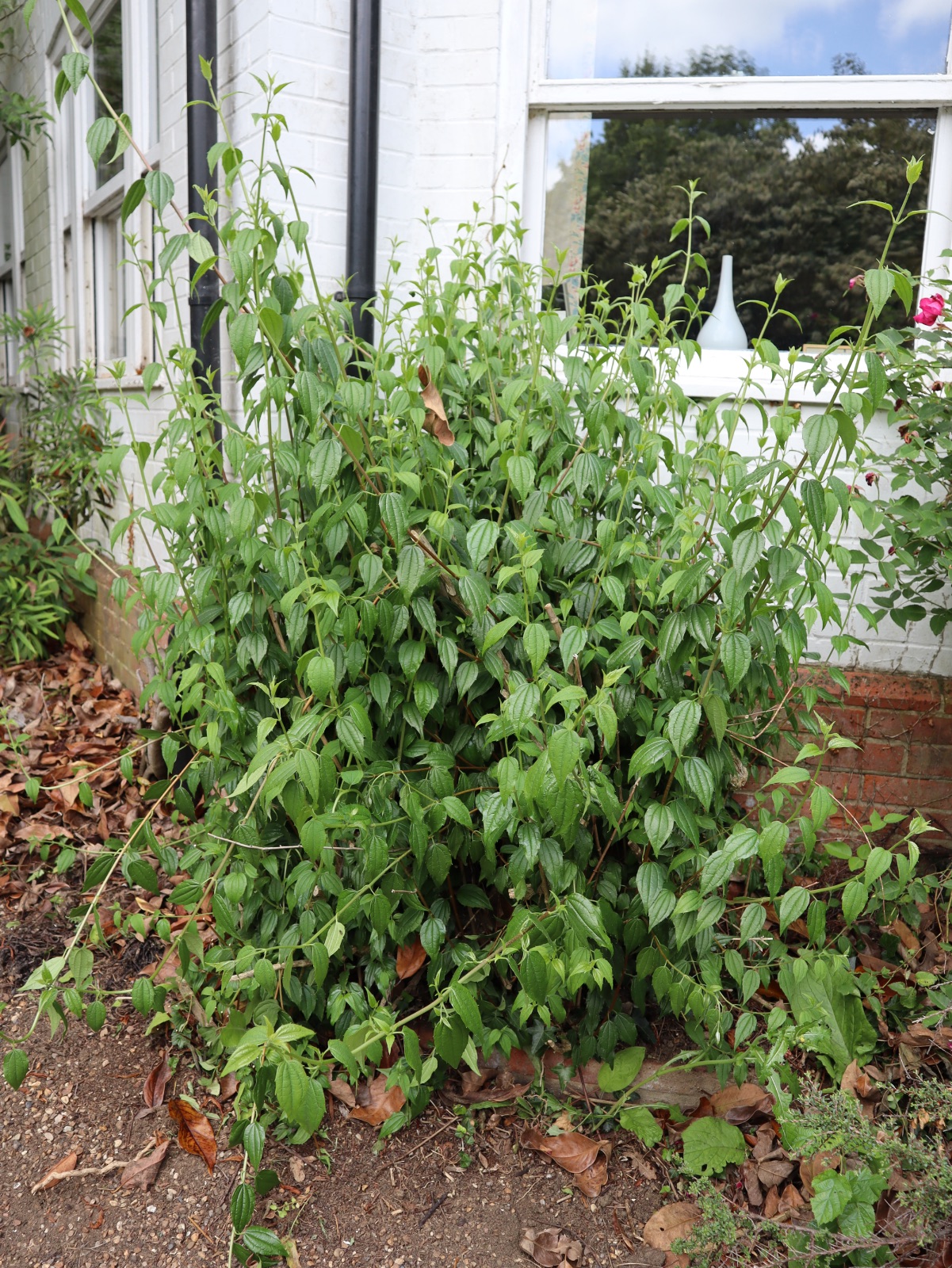Philadelphus mexicanus
Credits
Article from Bean's Trees and Shrubs Hardy in the British Isles
Recommended citation
'Philadelphus mexicanus' from the website Trees and Shrubs Online (treesandshrubsonline.
Genus
Infraspecifics
Other taxa in genus
- Philadelphus argyrocalyx
- Philadelphus californicus
- Philadelphus coronarius
- Philadelphus delavayi
- Philadelphus 'Falconeri'
- Philadelphus hirsutus
- Philadelphus incanus
- Philadelphus inodorus
- Philadelphus insignis
- Philadelphus lewisii
- Philadelphus magdalenae
- Philadelphus microphyllus
- Philadelphus pekinensis
- Philadelphus pubescens
- Philadelphus satsumi
- Philadelphus schrenkii
- Philadelphus sericanthus
- Philadelphus: The Hybrids
- Philadelphus tomentosus
- Philadelphus zeyheri
A shrub up to 6 ft high, with hairy young shoots; axillary buds not hidden by base of leaf-stalk. Leaves ovate-lanceolate, rounded at the base, slenderly pointed, sparsely toothed, three-nerved, 1 to 21⁄2 in. long, 1⁄2 to 1 in. wide, with appressed pale hairs on both surfaces, but more abundant beneath. Flowers cupped, solitary (rarely in threes) at the end of short, leafy shoots; 11⁄2 to 2 in. across, strongly fragrant, yellowish white; petals roundish, overlapping; calyx hairy, the lobes sometimes toothed; flower-stalk very short hairy; style about as long as the stamens; stigmas separate. Bot. Mag., t. 7600.
Native of Mexico; introduced by Hartweg in the late 1830s. It is a handsome and distinct species with rose-scented flowers, not hardy outside the mildest parts unless grown against a warm wall. It seems to be mainly represented in gardens by the blotched variety discussed below.
P coulteri S. Wats
This species, which is probably not in cultivation, differs from P. mexicanus in its acute or obtuse, not acuminate leaves, and in having the calyx and pedicels densely covered with white hairs. Native of Mexico. For P. coulteri Hort., see P. mexicanus ‘Rose Syringa’. A plant grown under the name P. coulteri was used by Lemoine in creating the hybrids of the Purpureo-maculatus group and was distributed by him commercially. The Irish gardener W. H. Gumbleton received a plant from Lemoine under the name P. coulteri in 1893. This flowered in 1896, and from his description it would seem that Lemoine’s P. coulteri was, like ‘Rose Syringa’, a blotched form of P. mexicanus. Gumbleton added: ‘I believe M. Lemoine has used this new Philadelphus for crossing with other varieties… but none of his seedlings from these crosses has yet flowered’. (Gard. Chron., Vol. 19 (1896), p. 752.)P maculatus (Hitchcock) S. Y. Hu
Synonyms
P. microphyllus subsp. maculatus Hitchcock
'Rose Syringa'
Petals mostly with a purplish-pink mark at the base (P. coulteri Hort., not S. Wats.; P. mexicanus var. coulteri Burbidge). This philadelphus first came to botanical notice in 1891, when F. W. Burbidge, Curator of the Trinity College Botanic Garden, Dublin, sent a specimen to Kew. In the accompanying letter he wrote: ‘Can you kindly give me the name of the enclosed? I cannot find it in the books. It exists in one or two old gardens here, where it is called Rose Syringa. Its sweet fragrance and purple-centred flowers are remarkable.’ What reply he received is not known, but writing some years later in The Gardeners’ Chronicle he referred to this plant as P. mexicanus coulteri and it is by this name, or as P. coulteri, that this philadelphus has been grown for the past seventy years. In fact, it is not P. coulteri S. Wats.; nor is it P. maculatus (Hitchc.) S. Y. Hu, as has recently been suggested (see below). Burbidge quite rightly referred to it as a variant of P. mexicanus, and was wrong only in identifying it with P. coulteri S. Wats.Since this philadelphus lacks a valid distinguishing name, it seems reasonable to take up the traditional garden name and call it ‘Rose Syringa’. The old plant at Tresco Abbey in the Isles of Scilly agrees in every detail with the example at Kew, except that the leaves are larger (up to 3 in. long), but this discrepancy can be explained by its greater size and vigour. These plants in turn agree with the Irish specimens in the Kew Herbarium. The origin of ‘Rose Syringa’ is not known, but it may well have been introduced by Hartweg at the same time as normal P. mexicanus. It agrees well with a specimen of this species collected by him and preserved in the Kew Herbarium, in which the flowers have a dark stain at the base, possibly indicating that they were blotched as in ‘Rose Syringa’. It is, however, very likely that the plants cultivated as P. coulteri are not the old variety of Irish gardens but a similar, perhaps indistinguishable, clone, distributed by Lemoine under that name (see further below).This variety is grown at Kew on the Temperate House Terrace and also in the University Botanic Garden, Cambridge, in a sheltered bay outside the greenhouses. In both gardens it makes a small plant, but would grow taller if there were room to train it.


